If you think you will do fine without ear protection when shooting, you really need to think again. Loud noises are bound to damage your hearing over time. Some temporary hearing loss may recover after a certain period of time but some percentage of the damage might be permanent.
Also, although most cases of hearing loss are caused by noise coming from being exposed to loud sounds over a long period of time, even a single gunshot can lead to permanent damage. And once the damage occurs, there’s no way to reverse it.
This means shooting hearing protection is a must when you are out hunting or on the shooting range!
How does hearing loss occur when exposed to gunfire?
Inside our ears, we have tiny structures called hair cells. These hair cells are responsible for detecting and transmitting sound signals to our brain. When we’re exposed to loud noises like gunfire, the sound waves created by the firearm enter our ears and hit these hair cells with great force.
The problem arises because the sound generated by firearms is extremely loud and intense. It can reach levels well above what our ears can handle without causing damage. The forceful impact of these loud sounds on the delicate hair cells can lead to their damage or even destruction.
Once the hair cells are damaged, they cannot regenerate or repair themselves. This means that any loss of these crucial cells is permanent and irreversible. As a result, our ability to hear certain sounds or frequencies are diminished or lost altogether.
The loud noise from gunfire can also cause other issues, such as ringing or buzzing sounds in the ears that’re known as tinnitus. This condition can last long after the exposure to the loud noise has ended.
Why should you use ear protection when shooting a firearm?
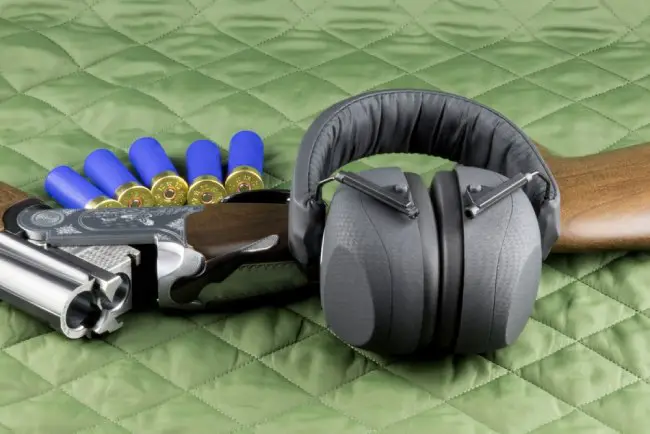
The answer is simple – to prevent hearing loss. But there’s more to that. You need to know what type of hearing protection you need in different shooting scenarios, and what makes the safest hearing protection for shooting.
Earplugs vs earmuffs
Earplugs are small, soft devices that you put in your ears to protect them from loud noises. They are lightweight, portable, and fit inside the ear canal. Earplugs work by blocking or reducing the intensity of the sound waves that enter the ears. They are usually made from foam or silicone materials and are known for their comfort and affordability. Earplugs are easy to carry around and convenient for shooting on the go.
On the other hand, earmuffs are larger, over-the-ear devices that cover the entire ear. They are made of cups with cushioned padding that seal around the ears to block out noise. Earmuffs use a combination of materials like foam and plastic to create a barrier between the ears and loud sounds. They are known for providing a higher level of noise reduction compared to earplugs. Earmuffs are often adjustable to ensure a secure and comfortable fit.
Here are some factors to consider when deciding between earplugs and earmuffs for shooting:
Noise Reduction
Earmuffs generally provide higher noise reduction compared to earplugs due to their larger size and cup design. They can effectively block out more noise, making them suitable for extremely loud shooting environments or for individuals who are particularly sensitive to loud sounds.
Comfort
Both earplugs and earmuffs can offer comfort but personal preference plays a significant role. Some shooters find earplugs more comfortable since they are lightweight and fit inside the ear canal. Earmuffs can feel bulkier and cause discomfort when worn for extended periods.
Communication
Electronic ear plugs allow for better communication during shooting. They reduce loud noises while still allowing softer sounds, like conversations or range commands, to be heard clearly. Earmuffs, on the other hand, may block out more sound and make it more challenging to communicate without removing them.
Portability
Earplugs are highly portable due to their small size and can be easily carried in a pocket or stored in a shooting bag. While still portable, earmuffs are larger and take up more space. They are usually worn around the neck or can be folded to make them more compact.
Double plugging
If you want extra protection, you can choose to use double plugging. That means you use either one or both types of ear protection at the same time. This may not be the most comfortable or fashionable option, but it will keep your ears safe from loud noises.
This method is often used when shooting powerful guns. For smaller guns, you don’t need as much ear protection.
Active vs passive shooting earmuffs
Active shooting earmuffs are a type of hearing protection gear that actively blocks out loud noises like gunshots, to keep your ears safe. They have special technology that detects loud sounds and instantly reduces the volume so you can still hear normal sounds but at a safer level. Active earmuffs are like having a bodyguard for your ears, always looking out for loud noises and protecting you from them.
On the other hand, passive shooting earmuffs are more basic. They work by simply blocking out loud noises with a thick material like foam or padding. They don’t have the fancy technology of active earmuffs to detect and reduce sound levels. Passive earmuffs are like wearing a pair of earmuffs that completely cover your ears and provide a physical barrier to protect your hearing.
What is the recommended dB for shooting ear protection?
The recommended decibel (dB) level for shooting ear protection varies depending on the specific circumstances and regulations in your location. However, in general, it is recommended to use ear protection that provides a Noise Reduction Rating (NRR) of at least 20 to 25 dB for shooting.
The NRR indicates the amount of noise reduction provided by the ear protection device. For example, if you’re exposed to gunfire with a sound level of 150 dB and you’re wearing ear protection with an NRR of 25 dB, the effective noise level reaching your ears would be around 125 dB (150 dB – 25 dB).
The National Institute on Deafness and Other Communication Disorders (NIDCD) states that hearing damage can occur when exposed to sounds that are 85 decibels (dB) or louder. However, any gunshot fired close to your ear without protection can be harmful.
Even if you have a silencer attached to your weapon, you should still use hearing protection to stay on the safe side.
What is Shooter’s Ear?
Shooter’s ear, also known as shooter’s ear syndrome or gunner’s ear, is a condition where those who frequently shoot firearms experience hearing problems or damage to their ears. It happens because shooting guns produces very loud noises that can be harmful to our hearing.
When you shoot a gun, it creates a sudden and intense sound wave that can cause damage to the delicate structures in your ears. Over time, repeated exposure to these loud noises can lead to various symptoms associated with the shooter’s ear.
Some common signs include hearing loss, ringing in the ears (known as tinnitus), and difficulty hearing certain sounds or conversations. These symptoms can vary in severity depending on the individual and the extent of exposure to loud gunfire.
To prevent shooter’s ear, you need proper hearing protection whenever you shoot firearms. As you know, such protective devices help reduce the volume of the loud noises and shield your ears from potential damage.
What is Noise Reduction Rating (NRR)?
The Noise Reduction Rating (NRR) is a measure used to show how well hearing protection devices like earplugs or earmuffs can reduce the noise that reaches your ears.
The higher the NRR, the more effective the hearing protection is in reducing noise. For example, if a pair of earplugs has an NRR of 30, it means that they can reduce the noise level by around 30 decibels.
Since the NRR is determined under ideal laboratory conditions, the actual noise reduction may be slightly lower in real-world settings. Also, the NRR is based on the assumption that the hearing protection is worn properly and fits well.
We recommend that you choose a product with a higher NRR if you’re going to be exposed to loud noises for a long time. This can help protect your ears from potential hearing damage.
Tips for using hearing protection for shooting
- Always wear ear protection whenever you shoot a gun
- Make sure to have disposable earplugs with you at all times and include them as part of your shooting essentials
- Opt for smaller caliber guns when practicing target shooting or hunting
- Use both earplugs and earmuffs when shooting powerful firearms for extra protection
- Try to avoid shooting with others or in places where sound echoes
- Prefer single-shot firearms over lever action, pump, or semi-automatic guns
Consider using electronic or nonlinear ear protection devices when hunting

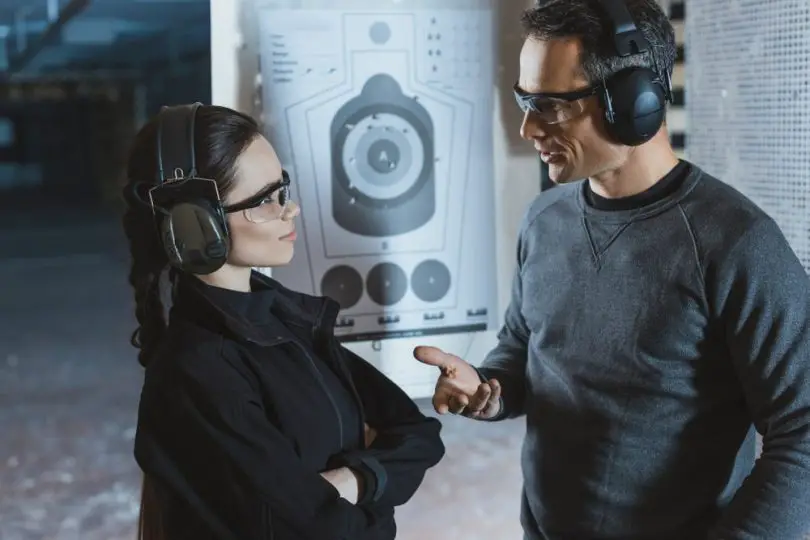
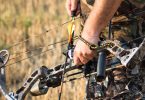
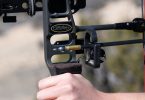
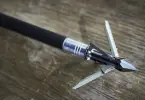
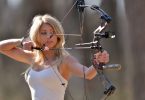
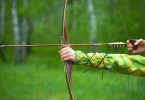
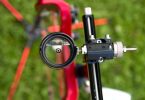

Leave a Comment